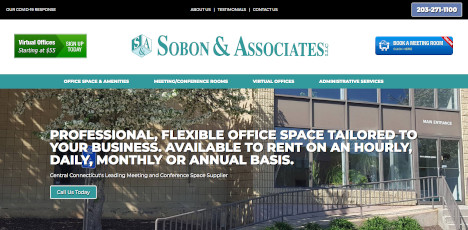
In the quickly progressing digital landscape, the decision of when to undertake a website redesign is essential for keeping a competitive edge, guaranteeing significance, and satisfying the ever-changing requirements and expectations of users. While there's no one-size-fits-all response, a basic guideline suggests embarking on a detailed website redesign every 2 to 3 years. This timeframe supports keeping in stride with technological improvements, design patterns, and altering user habits, making sure that a site stays efficient, interesting, and reflective of present best practices.
Website Redesign
A site acts as the digital face of a brand and, simply as services develop, so too needs to their digital existence. Upgrading a website is not merely about upgrading visuals or refreshing content; it's a strategic revamp that can considerably boost user experience, improve performance, and align the website more closely with brand name objectives and user expectations. In between major redesigns, it's equally important to execute continuous, incremental updates to deal with feedback, optimize performance, and refine the overall user experience.
This method guarantees the site stays dynamic and responsive to users' requirements.
Several factors indicate the requirement for a website redesign. Firstly, improvements to user experience (UX) can not be overemphasized. As user expectations evolve, staying abreast of accessibility requirements and navigation best practices is crucial. This ensures that the website is not only visually pleasing but also user-friendly and accessible to all visitors. Second of all, as a brand grows and its values and focus areas shift, the site needs to develop to precisely show these changes. This alignment enhances the brand name's message and identity, promoting a more powerful connection with its audience.
Website Technology
Technological developments represent another significant chauffeur for site redesigns. New technologies can improve a site's functionality, speed, security, and compatibility throughout different gadgets and web browsers. These enhancements can have a considerable influence on SEO, assisting to enhance a website's exposure and ranking on online search engine.
Moreover, remaining upgraded with the current technologies can much better secure a website from emerging security hazards, guaranteeing the safety and trust of its users.
The implications of ignoring site efficiency and search engine optimization (SEO) can be alarming. A website's loading speed, mobile responsiveness, and material optimization play pivotal roles in user retention and engagement. Furthermore, search engines favor sites that offer a remarkable user experience, ranking them higher in search engine result. Routine updates and optimizations can therefore considerably augment a site's efficiency and exposure.

Security concerns need to never be undervalued. The digital realm is filled with possible security threats, and an out-of-date site is even more vulnerable to attacks. Regular updates and a detailed redesign can shore up defenses, guaranteeing that the website remains a safe environment for users to engage with. Prior to initiating a redesign, it's necessary to engage in extensive research and analysis.
Understanding how users interact with the existing website and determining their requirements and discomfort points can use important insights. Leveraging analytics can clarify what elements of the site are carrying out well and which areas require enhancement. This data-driven approach enables a more targeted redesign effort, concentrating on improving functions that users worth and adjusting or getting rid of those that fall short.
In conclusion, the decision to redesign your website should be tactically timed and notified by a clear understanding of the website's existing performance, user expectations, and technological trends. While a total overhaul every 2 to 3 years is suggested, continuous modifications and updates are essential for maintaining a site's importance and effectiveness. Ultimately, the correct time for a website redesign is when the existing site no longer aligns with the brand's identity, fails to satisfy user expectations, or does not satisfy its intended organization goals. Proactively monitoring and assessing the website's performance and staying attuned to the digital landscape can aid in determining the most suitable moments for a redesign, making sure the site continues to act as an important possession to the brand.







